COVID-19 and its global rampage over the last 18 months is undoubtedly a major event in the field of longevity demographics and, sadly, in many people’s lives. In the future, the pandemic will catalyze changes in life expectancies – some driving increases in life spans and some driving decreases. In this blog, I will focus on those expected to decrease life expectancy in the near and long-term.
Mutations
Greek letters used to be the purview of mathematicians and philhellenes. Unfortunately, though, as the coronavirus that causes COVID-19 has mutated over the last 18 months, we’ve been receiving a crash course in the Greek alphabet. This is an improvement over the prior approach of identifying the latest mutation by the country that found the mutation (reducing some of the associated stigmatism and xenophobia).
The United States CDC classifies variants into four groups:
- Variants being monitored – there are currently 10 variants being monitored in the US
- Variant of interest
- A variant with specific genetic markers that have been associated with reduced effectiveness of antibodies generated against previous infection or vaccination, reduced efficacy of treatments, potential diagnostic impact, or predicted increase in transmissibility or disease severity.
- There are currently no variants classified in this group in the US
- Variant of concern
- A variant for which there is evidence of an increase in transmissibility, more severe disease (e.g., increased hospitalizations or deaths), significant reduction in effectiveness of antibodies generated during previous infection or vaccination, reduced effectiveness of treatments or vaccines, or diagnostic detection failures.
- The Delta variant is the only variant of concern in the US
- Variant of high consequence
- A variant of high consequence has clear evidence that prevention measures or medical countermeasures (MCMs) have significantly reduced effectiveness relative to previously circulating variants.
- There are currently no variants classified in this group in the US
While it is encouraging that the ‘pipeline’ of dangerous variants is relatively low (while some variants are being monitored, only Delta has risen above the baseline level of risk), it is shocking how quickly a new variant can emerge and overtake all others. The chart below, produced by the CDC shows how quickly the Delta variant overtook all other variants to become nearly 100% of the current cases in the United States. In the space of 3 months’ Delta went from around one-third of all cases to nearly all US cases.
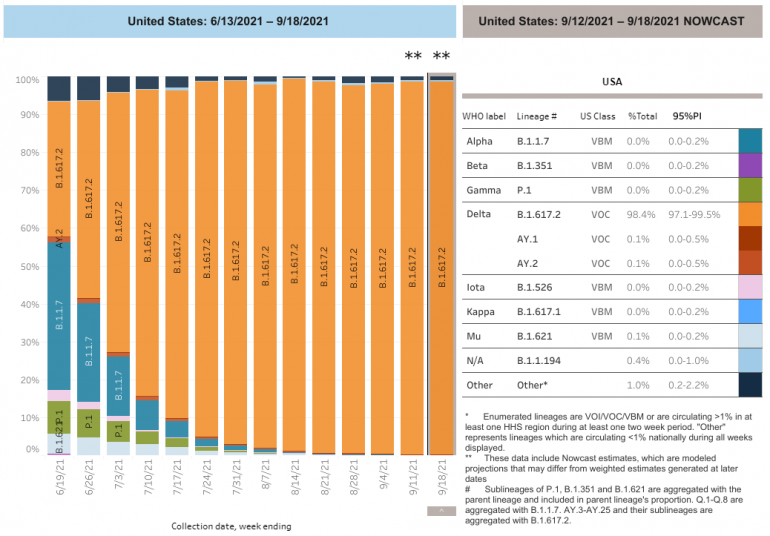
Source: CDC COVID Data Tracker: https://covid.cdc.gov/covid-da...
While the CDC is not yet concerned about other variants, this virus has shown an ability to mutate and quickly overtake prior variants. If this continues, there is no doubt this will increase mortality in the near term.
The New Flu
One of the dangerous characteristics of the influenza virus is its ability to quickly mutate to new variants that are not recognized by our immune systems. This causes annual flu seasons along with the need for scientists’ best guess for targeted flu vaccinations. The annual flu is an endemic disease – one that is always present in a certain population or region.
Many experts believe COVID-19 is on its way to becoming an endemic disease – one of which we will never rid ourselves completely. However, while we may not eradicate it, it is expected to become less deadly to the population than it was over the last 18 months.
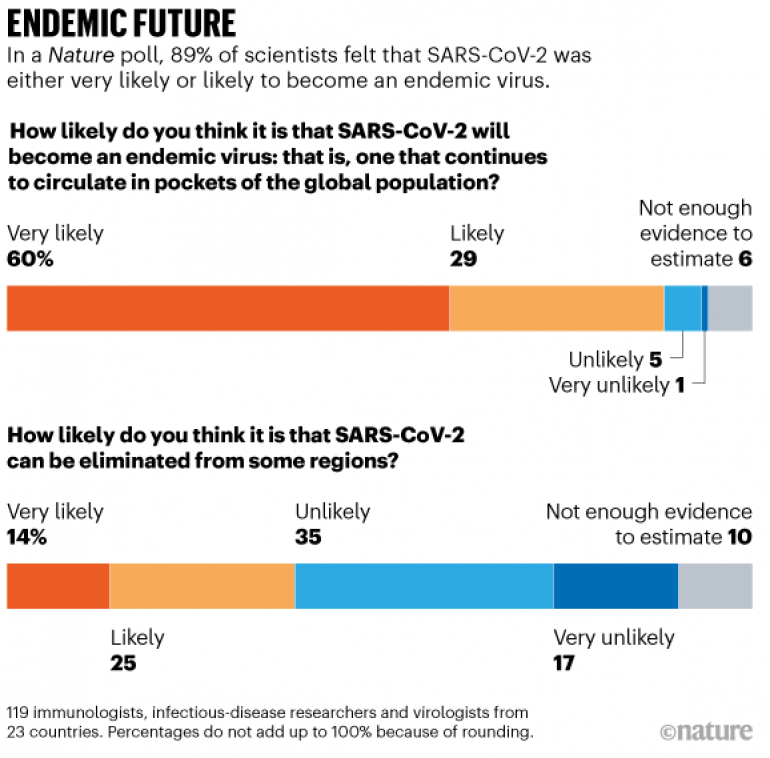
Source: Nature https://www.nature.com/article...
While an endemic COVID-19 will almost certainly become less deadly, adding a new endemic disease that is similar to flu will drive down life expectancies. The flu ranks among the top 10 causes of death in the UK, US and Canada. Annual deaths from flu in the United States ranges from 12,000 to 60,000
Long COVID
COVID-19’s acute respiratory effects are well-documented and deadly. Less well-known are the effects of post-acute COVID-19 syndrome, often referred to as “long COVID.” This is an area of much speculation since the pandemic is only around 18 months old. Scientific studies will certainly continue to monitor this syndrome for years to come.
Long COVID is “characterized by persistent symptoms and/or delayed or long-term complications beyond 4 weeks from the onset of symptoms.” A study published in the journal “Nature” splits long COVID into two subcategories:
- subacute or ongoing symptomatic COVID-19, which includes symptoms and abnormalities present from 4–12 weeks beyond acute COVID-19; and
- chronic or post-COVID-19 syndrome, which includes symptoms and abnormalities persisting or present beyond 12 weeks of the onset of acute COVID-19 and not attributable to alternative diagnoses Below is a chart showing a timeline of COVID-19 disease for someone with long COVID including common symptoms.
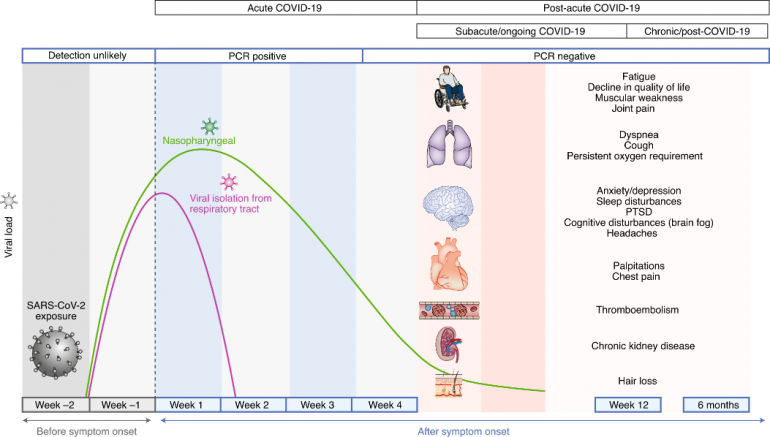
Source: Nature https://www.nature.com/article...
As you review the long COVID symptoms on the right, you will quickly identify a number that could result in decreases in life expectancy: persistent oxygen treatment, thromboembolism, chronic kidney disease. It seems clear that many survivors of acute COVID-19 may still be at long-term risk of shorter life spans.
Health care access and research
Access
Much has been written about hospitalization rates and how hospitals have been overwhelmed by the pandemic. The pandemic has caused people to delay or forgo normal or emergent health care needs because they are worried about exposure to the coronavirus and/or their health care providers have limited services. The chart below shows how prevalent delayed or forgone health care is among adults during the pandemic.
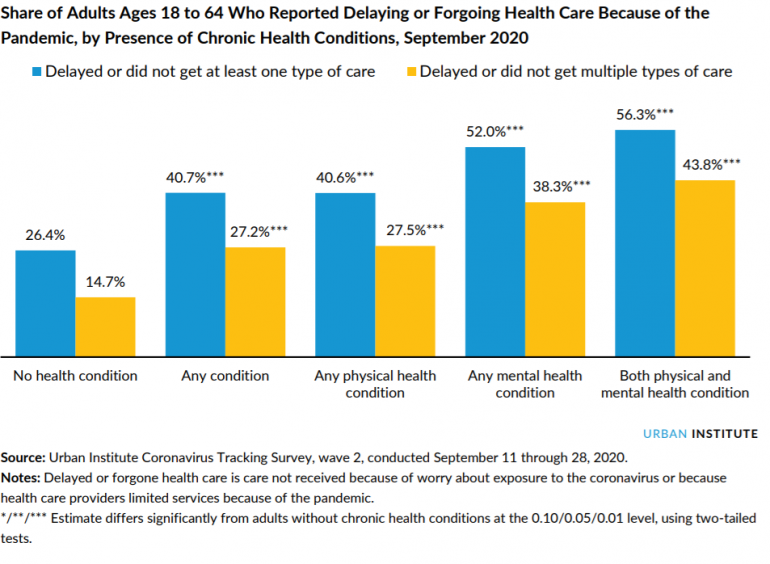
Source: Urban Institute: https://www.urban.org/sites/de...
Depending on what health care has been delayed or forgone, the effects can be small or large. The chart below shows that the reported impact of missing health care during the pandemic has been significant for some people:
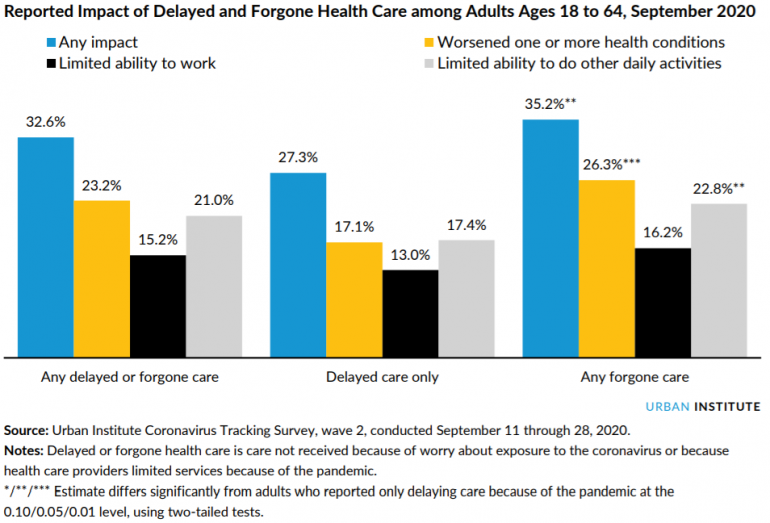
Source: Urban Institute: https://www.urban.org/sites/de...
Research
I am an optimist about the future of health care research. I’m particularly excited about the ability to use mRNA vaccinations for diseases other than COVID-19. Unfortunately, though, there is evidence that the pandemic has caused a significant delay in critical health care research. The chart below shows that the pandemic will “likely slow the pace of clinical research and new drug discovery, with long-term negative consequences for cancer patients.”
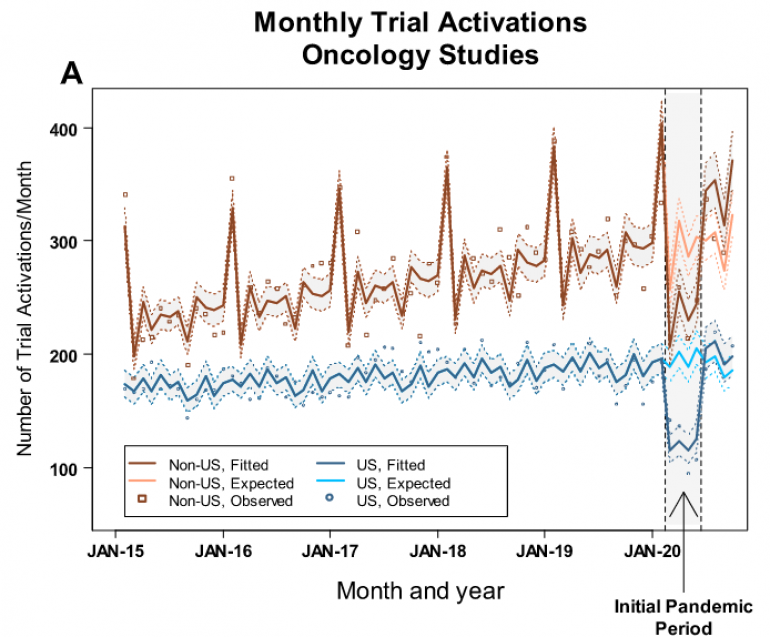
Source: Unger & Xiao, The COVID-19 pandemic and new clinical trial activations
Will the delays and forgone individual health care access combined with delays in health care research trials lead to shorter life expectancies?
What do you think?
Will the negatives outweigh the positives in the aftermath of the pandemic? Are we at a watershed moment with decreasing life expectancy on the horizon?




